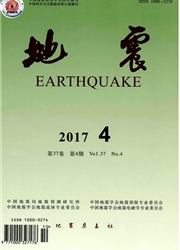

 中文摘要:
中文摘要:
2010年4月14日Ms7.1青海玉树地震与北西向的甘孜玉树活动断裂的活动有关,造成了沿断裂带分布的地表破裂以及房屋建筑设施的严重破坏。本文通过Landsat ETM+影像和SPOT影像分析了甘孜玉树断裂的第四纪活动特征,即断层崖和拉分盆地,冲沟左旋错断现象。地震后获取的高分辨率航空遥感影像解译结果显示,地震造成的地表破裂带主要沿甘孜玉树断裂的玉树段分布,在玉树县城两北部的主破裂带具有左行右阶走滑特征;玉树县城两南至桑卡一段的破裂表现为广泛分布的山体裂缝;桑卡西部的一段地表破裂表现为逆冲运动特征。玉树地震造成的房屋建筑破坏、水渠破坏、山体滑坡主要沿断裂带分布,玉树县城西部和南部房屋倒塌严重,玉树至桑卡一带断裂沿线村庄的房屋几乎全部倒塌,多处水渠破坏造成道路阻塞。结果表明玉树地震造成的地表破裂和震害分布受断裂带控制。
 英文摘要:
英文摘要:
The Ms7.1 Yushu earthquake, Qinghai occurred on 14th April, 2010 is related to the activity of the Ganzi-Yushu fault. Yushu earthquake caused surface ruptures and building damages distributed along the Ganzi-Yushu fault. The characteristics of quaternary activities of Ganzi-Yushu fault, such as fault cliff, pull-apart basin and left laterally faulted gullies, are analyzed based on Landsat ETM+ and SPOT images. High resolution aerial photographs acquired after the earthquake revealed that the surface ruptures mainly occurred along the Yushu segment of Ganzi-Yushu fault and the surface ruptures occurred to the north-west of Yushu are characterized by left-lateral and right-step features. Surface ruptures occurred between Yushu to Sangka segment are characterized by widely distributed cracks of mountains. Surface ruptures occurred to the west of Sangka are characterized by thrust features. Collapsed building, damaged aqueduct and mountain landslides are mainly distributed along the fault. Severe building collapse occurred in the west and south part of Yushu city. Results show that the spatial distribution of surface ruptures and earthquake damages is controlled by the fault.
 同期刊论文项目
同期刊论文项目
 同项目期刊论文
同项目期刊论文
 期刊信息
期刊信息
